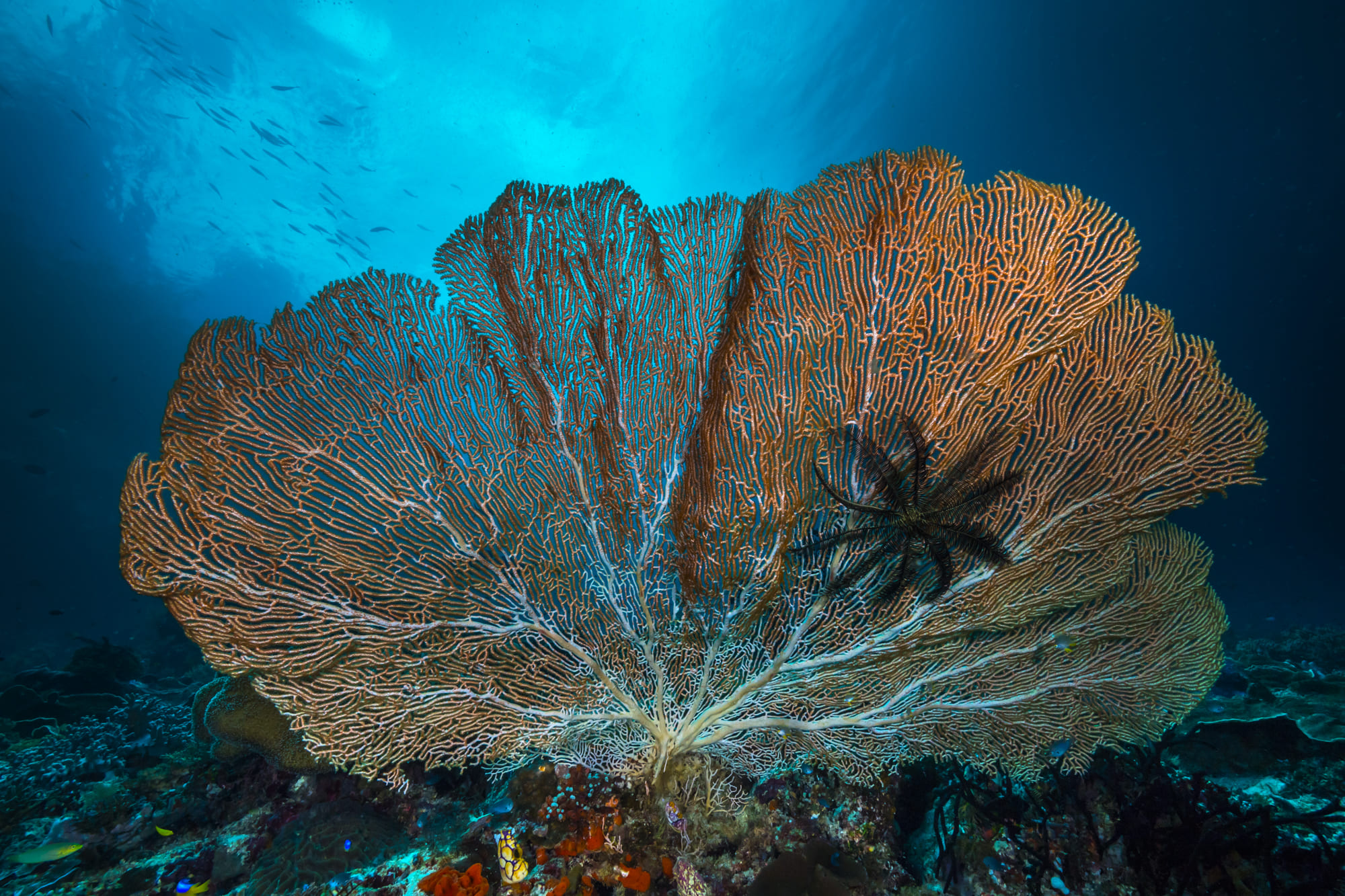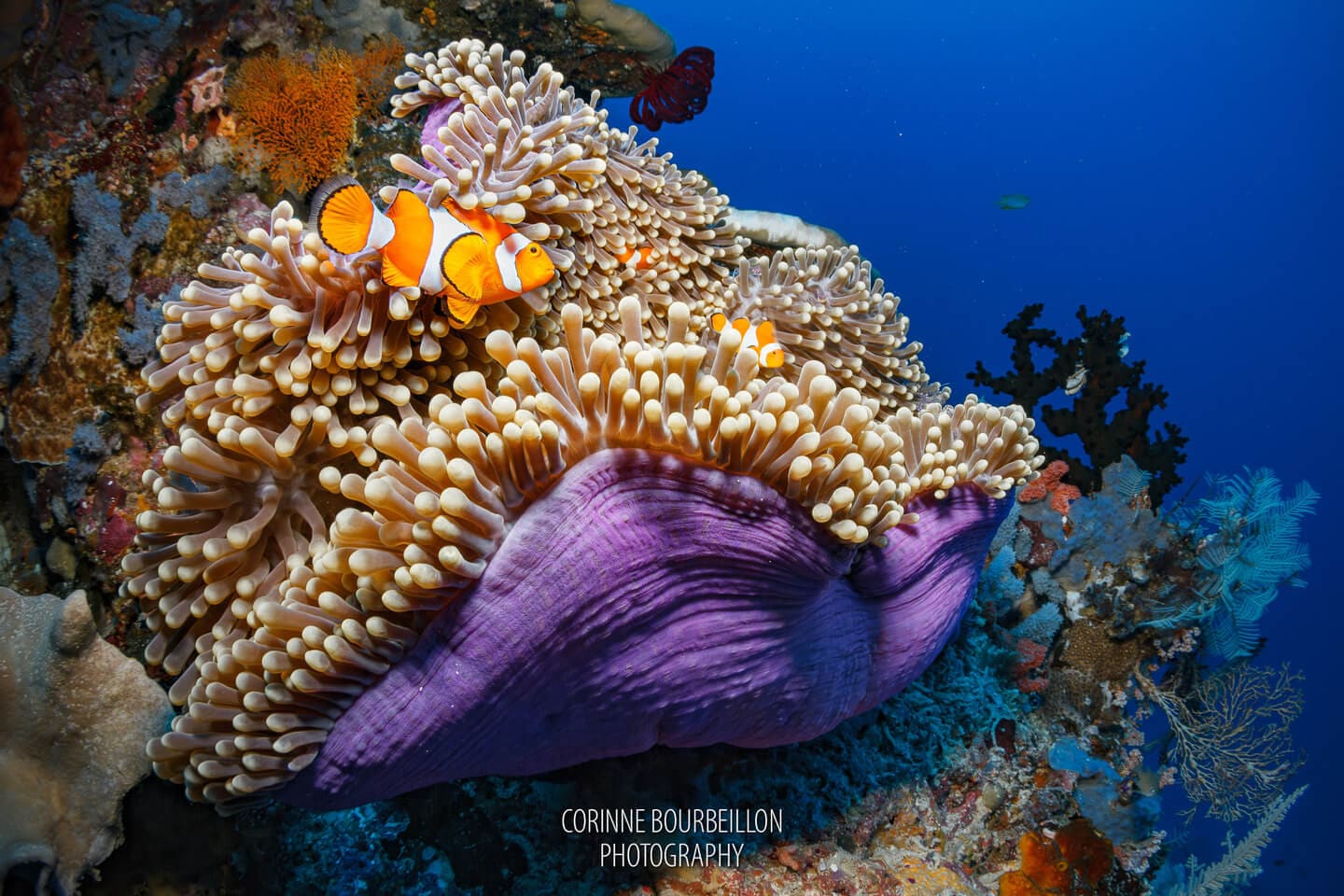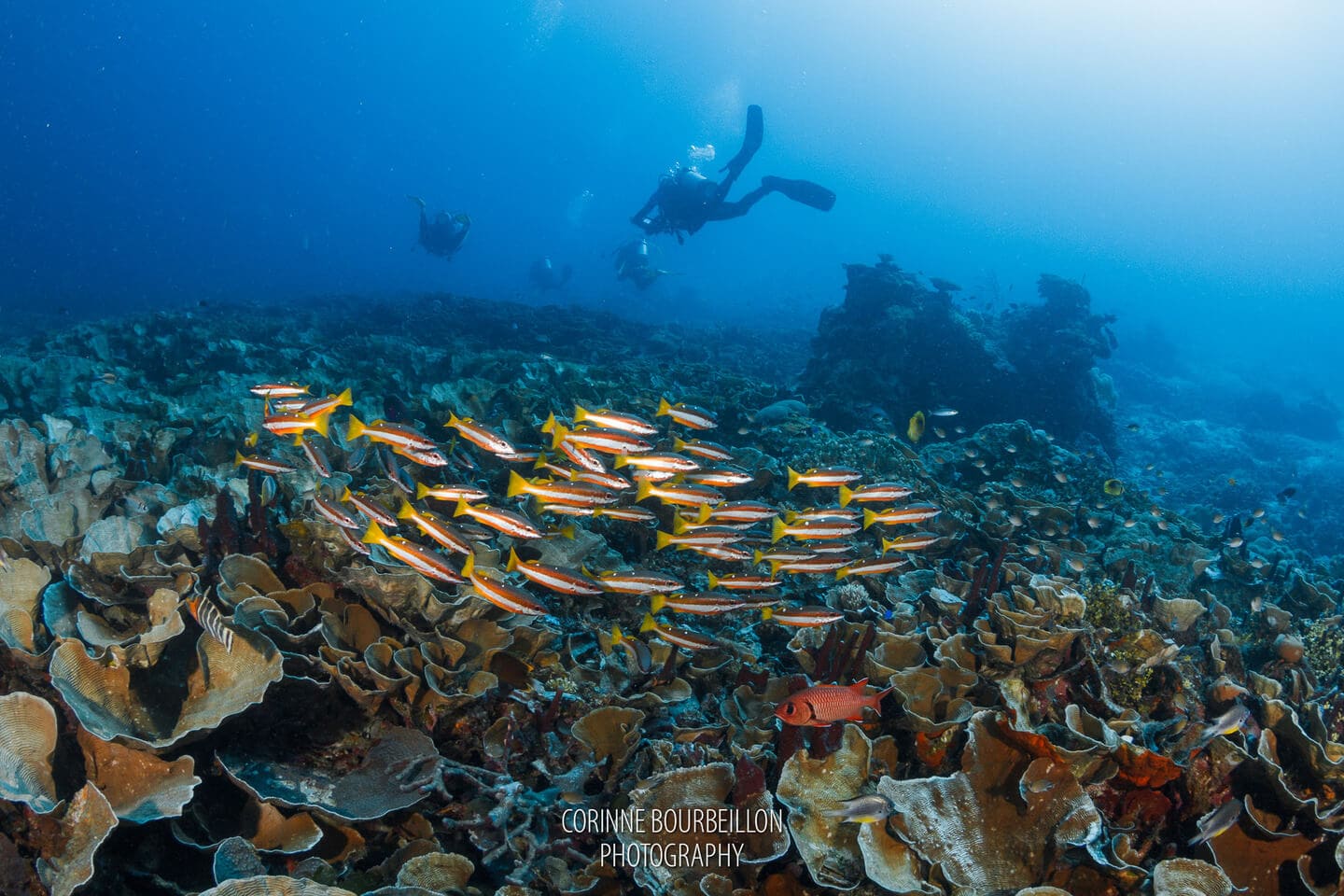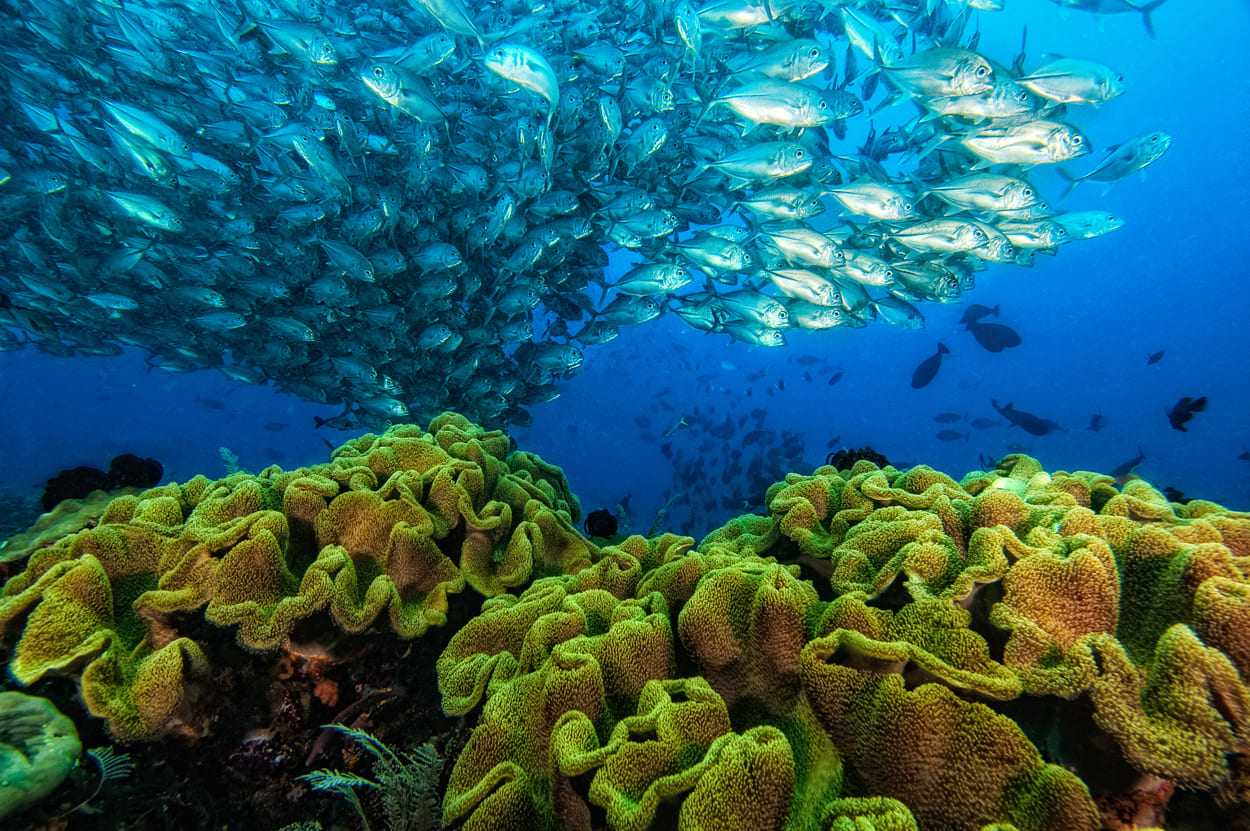
Sustainable Diving and Marine Conservation in Papua
Sustainable diving and marine conservation are becoming increasingly important here in Raja Ampat, which is good news for everyone.
- November 25, 2023

Sustainable diving and marine conservation are becoming increasingly important here in Raja Ampat, which is good news for everyone.
Located in the heart of the Coral Triangle, the waters surrounding Raja Ampat are some of the richest on earth, home to more than 1300 species of fish, more than 1000 coral reef species, and more than 500 species of reef-building corals, many of which cannot be found anywhere else in the world. Raja Ampat’s astonishing biodiversity and pristine surroundings are what attract divers, nature lovers, and explorers - and while this can mean positive outcomes for the local community and the tourism industry, the rise in human activity also poses a risk to its fragile aquatic ecosystem.
Here at Papua Diving Resorts, we’re collaborating with the local community to help raise awareness of sustainable diving while working to protect and preserve the underwater world by diving responsibly.

Raja Ampat is a well-protected area. In fact, the entire archipelago has a network of nine marine protected areas (MPAs) established by the local and regional governments. Raja Ampat’s first MPA was established in 2004, with the most recently established in 2019. These MPAs now encompass over 2 million hectares - approximately 45% of Raja Ampat’s coral reefs and mangroves. This includes the Dampier Strait MPA, the Fam Islands MPA, the Misool Marine Park, and the Batanta Marine Park.
The basic idea behind the MPAs is to create a “safe zone” to preserve and protect Raja Ampat’s rich marine biodiversity and aquatic ecosystem, mangroves, and other wildlife and habitats. Sustainable diving is also a great way to support the marine conservation efforts within these MPAs.
In addition to MPAs, there are also a number of other initiatives underway to protect Raja Ampat’s marine environment. These initiatives include:

While the sustainable diving and marine conservation efforts are at healthy levels in Raja Ampat, there are still other environmental challenges to overcome including:
Destructive Fishing: According to Reef Resilience, human impacts in Raja Ampat are less severe than elsewhere in Indonesia but this doesn’t mean that Raja Ampat’s natural resources aren’t being threatened by illegal activities like destructive fishing, overfishing, and the use of cyanide and dynamite.
Unsustainable Development/Tourism: According to The Sea People, 15 years ago, there were only 2-3 liveaboards, 5-8 land-based operations, and just 3000 tourists visiting Raja Ampat annually. The numbers skyrocketed in 2019 with 30,000 tourists, 26 resorts with more under construction, and more than 100 liveaboards and private vessels frequenting the area. This leads to environmental disturbances due to a lack of logistics and infrastructure.
Reef Damage & Pollution: The vibrant coral reefs of Raja Ampat are at risk from damage caused by anchors, trampling, and kicking. Pollution is another factor – land-based resources like sewage and toxic agricultural runoff lead to algal blooms, killing the corals and all the creatures that live within.

Here at Papua Diving Resorts, we established a conservation arm in 1993 to contribute to sustainable diving and tourism while protecting nature and empowering the local people. Some of our conservation efforts include:
The Raja Ampat Research & Conservation Center (RARCC): A major portion of our profits goes to the RARCC to introduce community-based initiatives, undergo coral reef restoration, facilitate research by students, researchers, and scientists, and support all work in sustainability & marine conservation in Raja Ampat.
Batanta Education Center: Established to provide the necessary education for the children of a remote village in Sauwandarek, where they now have 3 classrooms, 3 teachers, and 66 students.
Re-Shark Project: The first zebra shark hatchery in Raja Ampat was built here at Sorido Bay Resort - the eggs hatched three zebra shark pups, which were tagged and then released.
And this year, Papua Diving Resorts was awarded the best resort in Asia for ‘Protecting Cultural Heritage’ at EXO Foundation’s Sustainability Awards, empowering sustainable tourism across Asia.
Our guests indirectly play a crucial role in sustainable diving and marine conservation in Raja Ampat when they choose to stay with us at Papua Diving Resorts.

Stay with us at Papua Diving Resorts for sustainable diving and we’ll take you to explore some of Raja Ampat’s best dive sites including Cape Kri, Melissa’s Garden, Blue Magic, Sardines, and Manta Sandy. Choose one of our two charming resorts for your sustainable diving adventure:
Perfect for those who want a touch of luxury, Sorido Bay Resort is a collection of 7 charming bungalows with spacious rooms and ensuites, each with AC or fan and a veranda that overlooks a vibrant house reef.
Looking out over the dark blue waters of the Dampier Strait and distant mountain ranges, Kri Eco Resort is a cluster of authentic Papuan-style water bungalows built from locally sourced materials with 3 room types to choose from.
Ready to enjoy a sustainable diving holiday in Raja Ampat with Papua Diving Resorts? Contact us to learn more about us and what we offer, and to book your Raja Ampat sustainable diving holiday with the best rates and inclusions.

